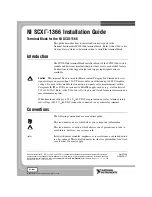
2
Multiple Sessions
2.1 Overview
Multiple sessions extend the WS520 to act like four terminals in one.
A session is an active connection between the terminal and a host
system. See Figure 1–3.
The WS520 supports up to four sessions using virtual terminals. Each
virtual terminal maintains the full keyboard and display state of a
real physical terminal but shares a single keyboard and display with
other virtual terminals. Before you can login using a virtual terminal,
it must be connected to a host computer.
WS520 session virtual terminals can be connected directly to a host
computer through any of the three serial communication ports on the
back of the terminal. Since there are only three comm ports, this
method alone can only support three sessions.
To use a fourth session or to reduce the number of serial comm lines
needed, more than one session must be connected through a single
comm port. The WS520 allows this using a session management
protocol, called TD/SMP (Terminal Device/Session Management
Protocol). TD/SMP allows two or more sessions to share a single
comm line, as long as the other end of the comm line supports the
protocol. To enable TD/SMP at the terminal, you simply assign more
than one session virtual terminal to the same comm port in Set-Up.
TD/SMP is available on most terminal servers or host systems with
SSU software. If you are using a terminal server, check with its
documentation to determine if it can run TD/SMP.
Multiple Sessions 2–1
Summary of Contents for WS520
Page 1: ...Asynchronous Terminals WS520 User Guide Order Number EK WS520 IN A01...
Page 22: ......
Page 36: ......
















































